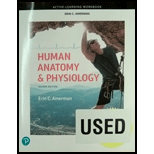
To review:
Whether the following statements are true or false. False statements are to be corrected.
a. The mass number of an atom is the sum of the number of neutrons and the number of protons.
b. Protons and neutrons have a positive charge and electrons have a negative charge.
c. Valence electrons are the electrons in the outermost shell of an atom.
d. Every element has a characteristic number of protons, which is called the element’s mass number.
Introduction:
The matter is basically defined as anything which has the mass and also occupies the space. It is widely studied in chemistry which is basically the study of matter and its interactions with the surrounding. The matter is made up of atoms and hence, atoms are known to be the tiniest unit of the matter which retains its original traits.
Explanation of Solution
a. The given statement is true. Mass number refers to the total numbers of neutrons and protons found within the nucleus of an atom. This value is important in determining the atomic mass of atoms.
b. The given statement is false. Protons are positively charged, electrons are negatively charged, and neutrons do not have any charge. The charge on a proton and that on an electron are identical in terms of magnitude, but are opposite.
c. The given statement is true.
d. The given statement is false. The mass number of an element is the total number of neutrons and protons found in the atom.
Thus, it can be concluded that statements (a), and (c) are true, and statements, (b), and (d) are false.
Want to see more full solutions like this?
Chapter 2 Solutions
Active-learning Workbook For Human Anatomy & Physiology
 Human Anatomy & Physiology (11th Edition)BiologyISBN:9780134580999Author:Elaine N. Marieb, Katja N. HoehnPublisher:PEARSON
Human Anatomy & Physiology (11th Edition)BiologyISBN:9780134580999Author:Elaine N. Marieb, Katja N. HoehnPublisher:PEARSON Biology 2eBiologyISBN:9781947172517Author:Matthew Douglas, Jung Choi, Mary Ann ClarkPublisher:OpenStax
Biology 2eBiologyISBN:9781947172517Author:Matthew Douglas, Jung Choi, Mary Ann ClarkPublisher:OpenStax Anatomy & PhysiologyBiologyISBN:9781259398629Author:McKinley, Michael P., O'loughlin, Valerie Dean, Bidle, Theresa StouterPublisher:Mcgraw Hill Education,
Anatomy & PhysiologyBiologyISBN:9781259398629Author:McKinley, Michael P., O'loughlin, Valerie Dean, Bidle, Theresa StouterPublisher:Mcgraw Hill Education, Molecular Biology of the Cell (Sixth Edition)BiologyISBN:9780815344322Author:Bruce Alberts, Alexander D. Johnson, Julian Lewis, David Morgan, Martin Raff, Keith Roberts, Peter WalterPublisher:W. W. Norton & Company
Molecular Biology of the Cell (Sixth Edition)BiologyISBN:9780815344322Author:Bruce Alberts, Alexander D. Johnson, Julian Lewis, David Morgan, Martin Raff, Keith Roberts, Peter WalterPublisher:W. W. Norton & Company Laboratory Manual For Human Anatomy & PhysiologyBiologyISBN:9781260159363Author:Martin, Terry R., Prentice-craver, CynthiaPublisher:McGraw-Hill Publishing Co.
Laboratory Manual For Human Anatomy & PhysiologyBiologyISBN:9781260159363Author:Martin, Terry R., Prentice-craver, CynthiaPublisher:McGraw-Hill Publishing Co. Inquiry Into Life (16th Edition)BiologyISBN:9781260231700Author:Sylvia S. Mader, Michael WindelspechtPublisher:McGraw Hill Education
Inquiry Into Life (16th Edition)BiologyISBN:9781260231700Author:Sylvia S. Mader, Michael WindelspechtPublisher:McGraw Hill Education





